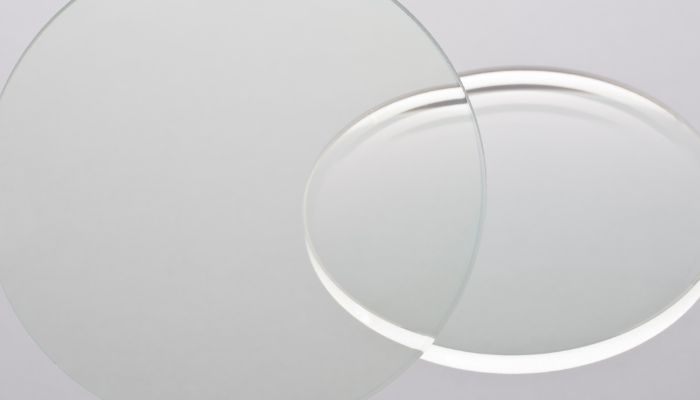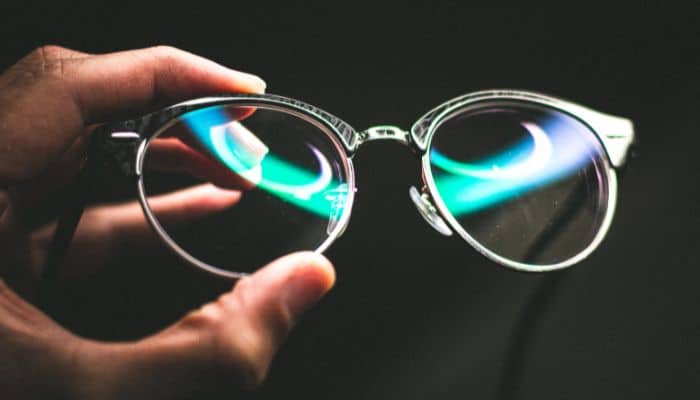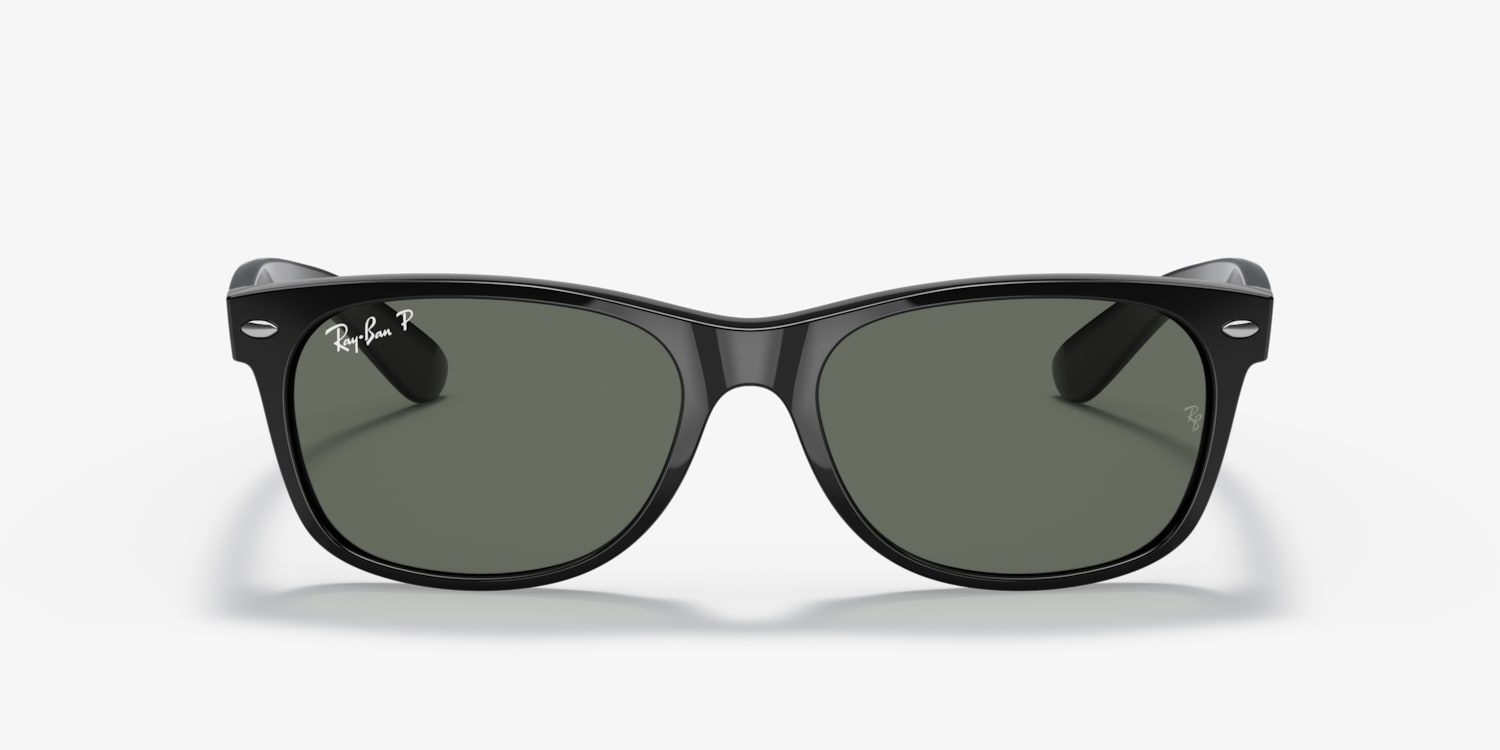Prescription sunglasses are a great investment for anyone who wears glasses and spends a lot of time outdoors. But how much do prescription sunglasses cost?
In this post, we’ll break down the average cost of prescription sunglasses and several factors that affect the price.
We’ll also provide tips on how to save money when buying Rx sunglasses without sacrificing quality. So, whether you’re looking for designer frames or a budget-friendly option, you’re in the right place.
(This page contains affiliate links. OGR may receive compensation if you click a link and make a purchase.)
How Much Is A Complete Pair of Prescription Sunglasses?
According to All About Vision, most people will spend anywhere from $150 to $500 for a pair of prescription sunglasses. So how does this all break down?
Frame Choice

When it comes to eyewear, the frame isn’t just the skeleton holding your glasses together, it’s a statement of your personal style.
Not surprisingly, sunglasses frames (and what they’re made of) can greatly influence the cost of Rx sunglasses.
Plastic Frames
Plastic frames are the budget-friendly heroes of the eyewear world, with an average price between $20 and $50.
Brands like Zenni Optical offer plastic frames for a very economical price (starting at $6.95!), even with Rx sunglass lenses.
Plastic frames are generally quite sturdy, comfortable, and don’t break the bank. They’re best for higher prescriptions too since plastic frames can hold and conceal thicker lenses.
However, they’re less adjustable and more prone to screws coming loose, warping, or breaking over time.
Metal Frames
Metal frames are usually more expensive than plastic ones, with an average price range of $60 to $150.
They come in all sorts of styles and shapes like the popular Aviator, including semi-rimless or rimless styles for a minimalist look.
The build is generally thinner and more resistant to damage compared to plastic frames.
Most metal frames also come with adjustable nosepads and flexible hinges, making them more comfortable to wear and fit your facial features.
On the downside, metal frames may cause skin allergies in people with sensitive skin or nickel allergies.
One way to avoid this is to choose a titanium frame, which is lightweight, non-corrosive, and has excellent durability.
Designer Frames
Designer frames like Ray-Ban, Gucci, Oakley, and Tom Ford (to name only a few) never go out of style.
Designer frame materials are higher quality, making them less likely to chip or wear out the way more affordable options do.
The range of colors, shapes, and sizes available is nearly limitless, and there are warranties to cover manufacturer’s defects for at least a year or two.
Of course, you’ll pay for these benefits, ranging from $150 to $500 or more.
On the upside, designer frames usually last many years with proper care, and you can often re-lens the same frame in the future if your prescription changes.
Types of Frames That Can Be Made Into Prescription Sunglasses
Not all frames can take the leap from regular glasses to prescription sunglasses. That said, most brand-name frames and a number of off-brand ones can accommodate lenses that match your prescription.
Let’s take a look at a few popular frame types that can take your eyewear game to the next level.
Aviator Frames

Aviator frames have a timeless, iconic style with large teardrop-shaped lenses and thin metal frames.
Think Tom Cruise in ‘Top Gun’ or Brad Pitt in ‘Once Upon a Time in Hollywood’.
Aviator sunglasses provide wide coverage and protection for your eyes and complement most face shapes very well.
Well-known aviator sunglasses that can be made with Rx lenses include the legendary Ray-Ban, pioneers of the Aviator style, Oakley, known for their sporty take, and Maui Jim, for those who want to bring a touch of the tropics to their shades.
If you’re looking for non-designer aviators, EyeBuyDirect and 30DollarGlasses have a couple of good ones that are Rx-eligible:
Wayfarer Frames

Wayfarer frames have that retro, ’80s rockstar vibe with trapezoidal-shaped lenses and thick plastic frames.
Like Bob Dylan in his heyday, or get an updated version with less angles and more curves.
Wayfarer frames are great for their robust design, making them excellent for everyday wear.
They’re versatile and fashionable, with many brands offering updated variations on this classic style for a more modern take.
Give the real thing a whirl:
Or a good budget alternative:
Round Frames

The benefits of round frames for prescription sunglasses include: excellent coverage and protection for the eyes, as well as an airy feel if you get a larger lens size.
They also come in multiple looks from the vintage, wireframe John Lennon style to trendy oversize shades.
Lens Choice
Your lens choice is another important factor that determines the cost of prescription sunglasses. Let’s take a look.
Plastic Lenses
Basic plastic lenses cost around $10 to $50. They’re an economical choice for those who want to save some money.
Widely available, standard CR-39 plastic lenses have great clarity and are easy to tint, so they’re ideal for sunglasses.
However, they’re also the thickest lens type and more prone to scratches.
They’re the no-frills choice for those on a budget, and are best for mild prescriptions (less than +1.50 or -1.50).
Plastic vs. Polcarbonate Lenses
Polycarbonate Lenses

Polycarbonate lenses, the kind that space helmets are made of, range from about $50 to $100.
They’re the most impact-resistant, which is why they’re the go-to choice for kids’ glasses, safety glasses, and sports eyewear.
Polycarbonate is thinner than plastic and inherently UV-blocking , so there’s no need to add UV-protection to the lens.
Like plastic, polycarbonate is prone to scratching, so a good anti-scratch coating is recommended.
The other downside to polycarbonate is they can cause some visual distortion compared to both plastic and high-index lenses.
Polycarbonate vs. High Index Lenses
High-Index Lenses

High-index lenses (1.60-index or higher), cost anywhere from $100 to $200 or more depending on the level of thinness.
Their claim to fame? They are thinner, lighter, and are more aesthetically pleasing for those who have high prescriptions (around +3.00 or -4.00 or higher).
The three main high-index lens levels are: 1.60, 1.67, and 1.74. The higher the number, the thinner the lens will be and the more expensive it becomes.
High-index lenses are fairly scratch-resistant but not scratch-proof, so a good anti-scratch coating is still recommended.
Lens Coatings

When it comes to prescription sunglasses, certain lens coatings can make a world of difference.
Specific benefits include additional protection, vision enhancement, and improvement in the appearance of your lenses. Let’s look at a few options.
UV Protection Coating: A Must-Have

UV protection is one lens treatment that’s absolutely necessary to protect your eyes from the sun. It generally adds around $10 to $20 to the cost, or may be included in the price.
Its job? Blocking harmful ultraviolet rays that can damage your eyes, causing conditions like cataracts and macular degeneration.
There’s no doubt this is absolutely necessary for prescription sunglasses — it’s like sunscreen for your eyes.
Some retailers like Zenni Optical include UV protection as a standard feature on all of their lenses.
Anti-Reflective Coating

Anti-reflective coating can cost you around $20 to $50 or more. This lens treatment reduces glare that reflects off lenses, giving you better vision.
It also allows others to see your eyes more clearly through your lenses.
If nothing else, it’s recommended to put anti-reflective coating on any pair of glasses or sunglasses for your own visual comfort.
Polarization

If you’ve ever squinted because of a blinding reflection off water or a shiny car hood, then you should consider getting a polarized lens coating.
This will cost around $50 to $100 or more.
Polarized lenses filter out horizontal light waves that cause glare, reducing discomfort and eye fatigue.
They’re excellent for beach and water activities like fishing and boating, and are even great for driving.
The main downside to polarized lenses is you may have trouble seeing digital screens clearly when wearing your sunglasses.
Polarized vs. Non-Polarized Sunglasses
Prescription Type
What’s in a prescription? For eyeglasses, it’s not just about knowing that you need them—it’s also about understanding what type you need.
The complexity and accuracy of your lenses, driven by your prescription strength, directly influences the cost of prescription sunglasses.
Single Vision Lenses
Single-vision lenses will generally set you back anywhere from $10 to $200. They correct for one type of vision problem across the entire lens, be it nearsightedness, farsightedness, or astigmatism.
They’re the most common prescription type.
Bifocal Lenses

Bifocal lenses cost around $50 to $300 and correct for two types of vision problems (near and far distance) in one lens.
Bifocals are actually two lenses in one, separated by a visible line with the upper lens correcting for distance and the lower section for up-close activities like reading.
Progressive Lenses
The most complex prescription lens type is the progressive lens.
These cost around $150 to $400 or more. Progressive lenses are multifocal lenses that correct for both near and far vision without any visible lines or boundaries between each viewing area.
The seamless design doesn’t give away your age, and the gradual transition between lens powers eliminates an abrupt or jarring change when shifting your gaze up and down.
Progressive lenses can take some time to adjust to though, as some people experience visual distortion or blurriness at the edges.
How to Save Money on Prescription Sunglasses
Prescription sunglasses aren’t cheap but there are many ways to reduce the cost.
Here are the best strategies to help you save some green when buying your next pair of prescription sunglasses:
Shop Around and Compare Prices from Different Opticals
Don’t be afraid to shop around and compare prices. Just as you would for a car or a TV, do a little comparison shopping before you commit.
With the wide array of online and brick-and-mortar retailers out there, you’re sure to find variations in pricing.
Online retailers like Zenni Optical or EyeBuyDirect offer a vast selection of budget-friendly options with their house frames and lenses.
Buy Online

If you’ve always gotten your glasses from your local optical shop, consider buying your next pair of glasses or sunglasses online.
Online retailers like Warby Parker, Liingo Eyewear, or YesGlasses have competitive prices, extras like free shipping and included lens coatings, and even free at-home try-on options.
You can also find good deals on Rx-eligible designer sunglasses at GlassesUSA, SmartBuyGlasses or FramesDirect.
Buy Frames and Lenses Separately
Did you know you don’t need to buy your sunglass frame and lenses at the same place?
That’s right, you can buy them separately and save yourself some cash.
For example, you might find a pair of frames you love but the lens options offered by the retailer don’t fit your needs or budget.
It’s often possible to purchase the frames from one place and get your lenses filled at a different optical retailer.
Just confirm with the optical shop you plan to get lenses from before purchasing your frame.
Some online retailers even offer lens replacement services, allowing you to get the frames you love with lenses you need, often at a fraction of the cost.
Use Vision Plan Coverage or FSA/HSAs to Offset Cost

Finally, take advantage of your vision insurance plan if you have one. Many vision insurance plans offer coverage for prescription sunglasses.
Similarly, Flexible Spending Accounts (FSA) and Health Savings Accounts (HSA) can also be used to pay for prescription sunglasses.
It’s worth noting that these purchases usually need to be done through a registered provider, so make sure to check your plan details before you shop.
Prescription Sunglasses Under $100? It’s Possible
If you got sticker shock looking at some of the options we just discussed, don’t fret. With so many options and retailers around these days, it’s entirely possible to get yourself a decent pair of prescription sunglasses for way less than you’d expect.
Be open to new ways of getting them – such as purchasing online or buying your frame and lenses separately – and you can absolutely own a pair without paying through the nose.








